Hundreds of thousands of birds foamed to death in Indiana
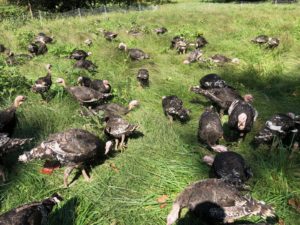
Turkeys living on grass at Maple Valley Farm. Once they are out of the brooder, turkeys are moved to fresh grass regularly.
As I write this, hundreds of thousands of poultry around the state of Indiana have been purposely suffocated in their industrial turkey houses by expanding foam pumped in from tanker semis. 1https://www.aphis.usda.gov/publications/animal_health/2016/hpai_depopulation_disposal.pdf The Indiana Board of Animal Health reports that 154,781 turkeys have been “depopulated” in recent days.2You can see the BOAH dashboard here: https://www.in.gov/boah/species-information/avianbirds/highly-pathogenic-avian-influenza/ Why?
Because of Avian Influenza. Higher than normal mortality in a couple of poultry barns led to the discovery of an avian influenza strain. A similar situation in 2016 led to the foaming of over 400,000 birds in our state.3https://www.in.gov/boah/species-information/avianbirds/highly-pathogenic-avian-influenza/2016-hpai-information/ Not only are the birds within the suspect house killed, but all the birds within a 10km (6.2 mile) radius are placed in quarantine and also will be suffocated if routine testing detects the viral DNA.
Should we be worried?
One of our fellow partners asked if we are concerned. Back in 2016, we were contacted by the press with the same question. So, I feel compelled to write in order to counter the false narrative that is being spread by the state of Indiana and the poultry industry.
First, our answer is unequivocally: No, we are not concerned about our poultry contracting Avian Flu. However, yes, we are concerned about the situation. In particular, we are concerned about egregiously inhumane treatment of animals, needless waste of food, government overreach, disinformation and the resulting effect on our own efforts to provide wholesome food.
Comparing apples to oranges
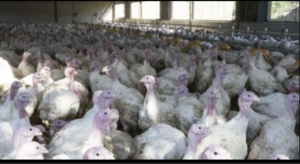
This is an Associated Press photo taken from inside a turkey barn in the same area as the recent outbreak.
Please understand the condition of the birds in these poultry houses. They are continuously in tight quarters from birth to butcher, without grass, sunlight or fresh air. They are breathing a thick cloud of fecal contaminated ammonia 24-7-365. Their unnatural and severely cost-minimized diet, combined with their living conditions, leads to a number of myopathies severe enough to create losses for the industry of over $1B annually. Ten to twenty percent of all poultry are estimated to be affected badly enough to have an economic impact — the rest are still passed on to the consumer. Their flesh is a soft mush and their thin bones twist under their own weight. A certain percentage are now routinely rejected due to voids, connective tissue/fat and “woodiness” within the muscle tissue. 4https://zootecnicainternational.com/featured/understanding-the-woody-breast-syndrome-and-other-myopathies-in-modern-broiler-chickens/ Their immune systems can only euphemistically be described as “compromised.” Therefore, the idea of allowing an industrial turkey to come into contact with a chicken or any other bird in the wild, strikes terror in the heart of the industry because it means certain cross-contamination.
Germ Theory versus Terrain Theory of Disease
Amazingly, the industry and the State deny that the environment has anything to do with the susceptibility of the birds to disease. They see only the pathogens while ignoring the “terrain” (internal condition of the birds5https://www.westonaprice.org/health-topics/notes-from-yesteryear/germ-theory-versus-terrain-the-wrong-side-won-the-day/ or the environment). They shift the blame to migratory birds whose droppings contain certain pathogens. And, because back yard, hobbyist and small farm chickens are allowed to roam outside where they can come into contact with wild birds and their droppings, the villain in this narrative is anyone who keeps her chickens outdoors. These outbreaks, they argue, must be coming from chickens on small farms and they spread as people move these pathogens around.
Bad ideas lead to bad results
Bad decisions are often the result of a bad philosophical paradigm. A holistic, systems-thinking approach understands that opportunistic micro-organisms have a place in cleaning up and rebalancing damaged terrain while “viruses” are the result of — not the cause of — systemic damage to an organism.
The poultry-consuming public greedily demands cheap and easy food. Industry demands government protection from competition in order to maintain profits. Legislators and bureaucracies demand kickbacks for re-election and trouble-free, one-size-fits-all approaches.
Your decision to be a partner6http://harvestpartners.farm/ in the production of your own food fights all of these and promotes animal and human health in a single, integrated approach.
Thank you!
(1) https://www.aphis.usda.gov/publications/animal_health/2016/hpai_depopulation_disposal.pdf
(2) You can see the BOAH dashboard here: https://www.in.gov/boah/species-information/avianbirds/highly-pathogenic-avian-influenza/
(3) https://www.in.gov/boah/species-information/avianbirds/highly-pathogenic-avian-influenza/2016-hpai-information/
(4) https://zootecnicainternational.com/featured/understanding-the-woody-breast-syndrome-and-other-myopathies-in-modern-broiler-chickens/
(5) https://www.westonaprice.org/health-topics/notes-from-yesteryear/germ-theory-versus-terrain-the-wrong-side-won-the-day/
(6) http://harvestpartners.farm/
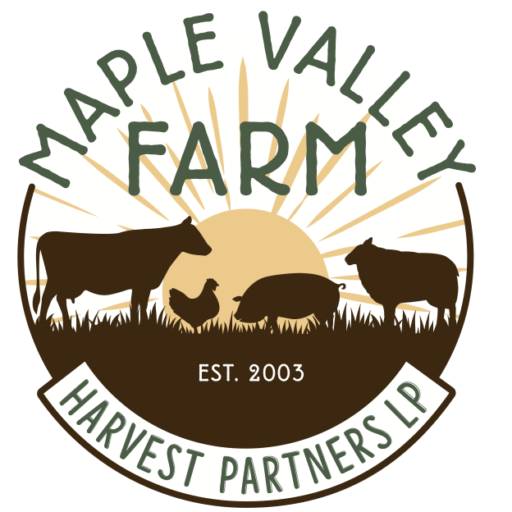

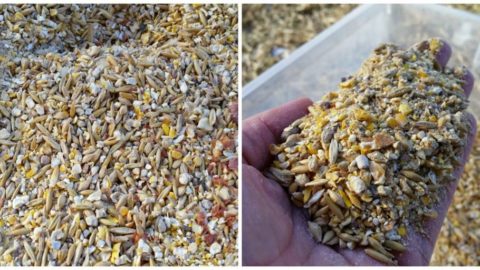
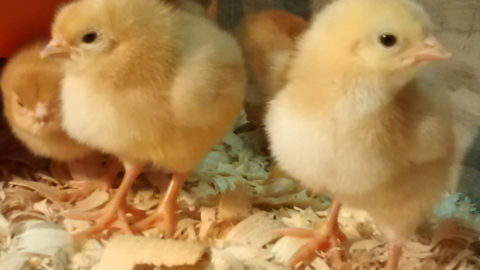
Thank you so much for all you do to educate us.
We are very grateful for the excellence with which you and your family care for your animals, land, community and partners.
Abundant Blessings!
Rich and Kathy Jordan